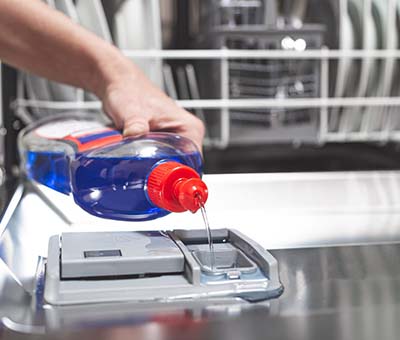In this comprehensive guide, we will explore some of the typical reasons why a dishwasher could start dripping water from the bottom of the door and offer you practical and workable solutions to address these issues effectively.
Common Causes of Dishwasher Leaks
1. Door Gasket Damage
The door seal is a rubber seal that runs around the dishwasher door. Its main role is to ensure a watertight seal when the dishwasher is in use. Over time, wear and tear can cause the seal to wear, crack, or become damaged, resulting in leaks.

2. Loose or Damaged Door Latch
A defective or malfunctioning door latch can cause the dishwasher door to not close properly. If the door does not seal properly, water may leak during the rinse cycle, causing leaks at the bottom of the door.
3. Overloading the Dishwasher
While it might be tempting to fit as many dishes as possible into a single load, overloading the dishwasher can have consequences. It can cause water to splash against the door, compromising the seal and causing leaks. Additionally, crowded dishes may prevent the door from closing properly.
4. Improper Detergent Use
Using the wrong type of detergent or using too much detergent can cause excessive foaming in the dishwasher. This soapy water can seep out from under the door during the wash cycle and cause leaks

5. Door Alignment Problems
If the dishwasher door is not properly aligned with the rest of the appliance, it may not seal properly. This misalignment allows water to leak and collect at the bottom of the door.
Diagnosing the Leak
Identifying the Source
Before you can fix the problem, you need to determine where the leak is coming from. To do this, check the dishwasher during a wash cycle and see if you can identify the cause of the leak. Pay particular attention to the areas around the door and bottom of the dishwasher.
Signs of a Leaky Dishwasher
Look for signs of a leak, such as:
- Water accumulation on the floor in front of the dishwasher
- Water stains on the kitchen cabinet next to the dishwasher
- Moisture inside the dishwasher after a wash cycle.
These indicators will help you pinpoint the problem more precisely.
Troubleshooting and Solutions
1. Replacing the Door Gasket
If the door seal is damaged, it must be replaced. The old seal must be removed and a new one installed to ensure a proper seal. Be sure to choose a replacement gasket that is compatible with the make and model of your dishwasher.

2. Fixing a Loose or Damaged Door Latch
A loose or damaged door latch can cause your dishwasher to leak from the bottom of the door. To resolve this issue, tighten any loose screws on the latch mechanism or replace the latch if it is visibly damaged. Make sure the latch clicks securely to ensure a watertight seal and prevent leaks during the wash cycle.
4. Adjusting Dishwasher Loading
Avoid overloading the dishwasher and make sure dishes are properly loaded to avoid water splashing against the door. Follow the manufacturer’s loading recommendations to ensure a secure seal.
5. Using the Right Detergent
Select the correct dishwasher detergent and follow the manufacturer’srecommendations for dosage to prevent excess suds and leaks. Using a dishwasher detergent that is specifically designed for your dishwasher type can help maintain a trouble-free wash cycle.
6. Aligning the Door Properly
If the door alignment is off, you may need to adjust the door to ensure a tight seal when closed. This may involve loosening screws, aligning the door correctly, and then tightening the screws securely.
Preventive Maintenance
1. Regular Cleaning Routine
Implement a regular cleaning routine for your dishwasher, including cleaning the filter and removing any debris from the interior. A clean dishwasher is less likely to encounter issues that could lead to leaks.
2. Inspecting Door Seals
Check the door seal regularly for signs of wear. If you notice any damage, replace it immediately to maintain an effective seal. This preventive measure can save you from future leaks.
3. Checking Door Alignment
Ensure that the dishwasher door is properly aligned with the rest of the unit. Periodically check the alignment and make adjustments as needed to maintain a tight seal.